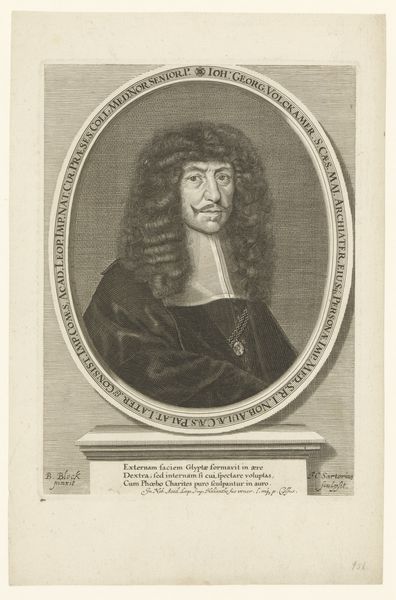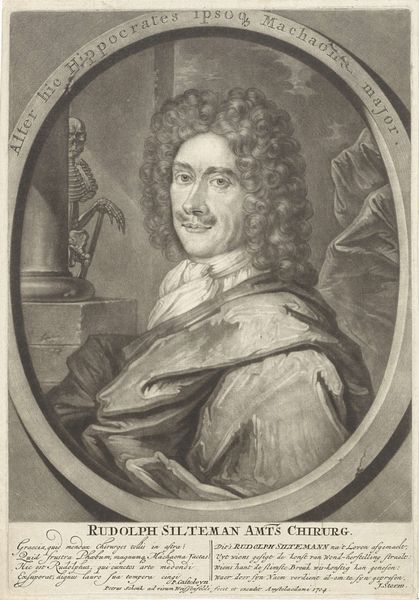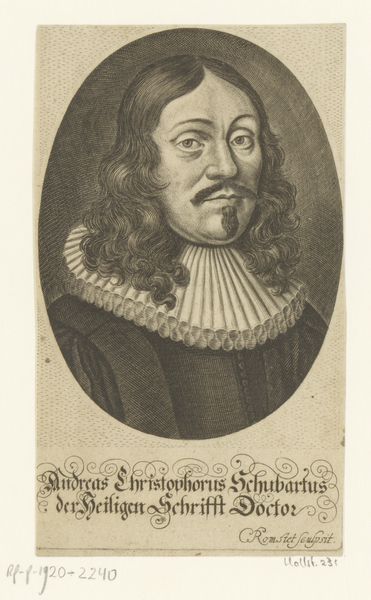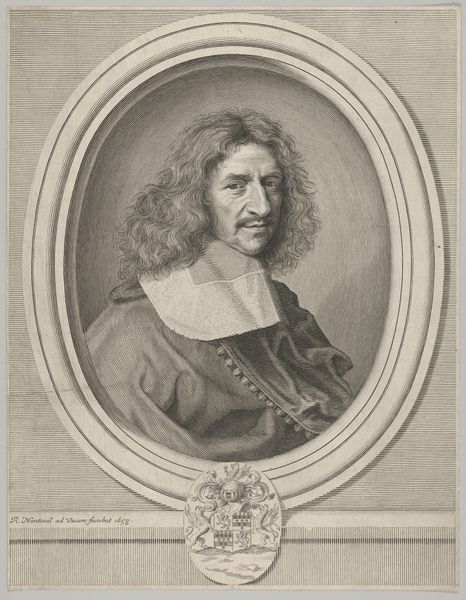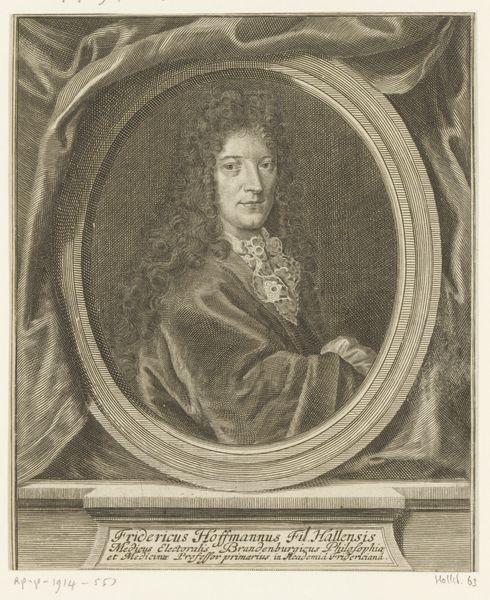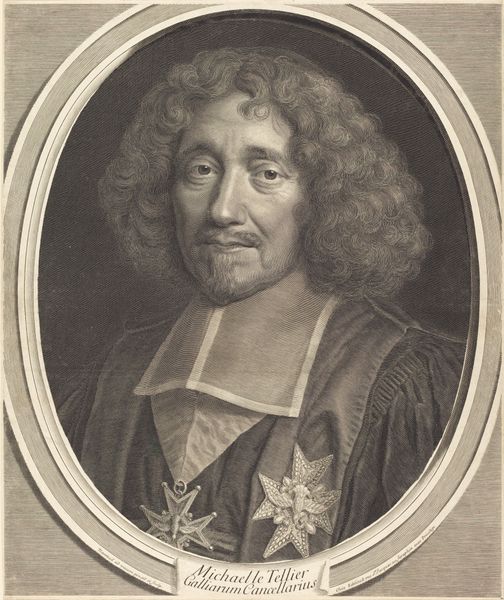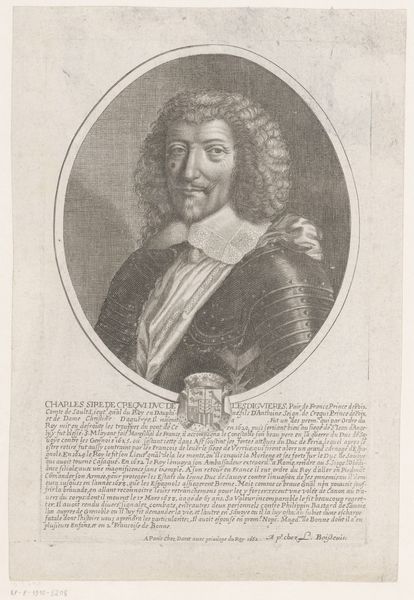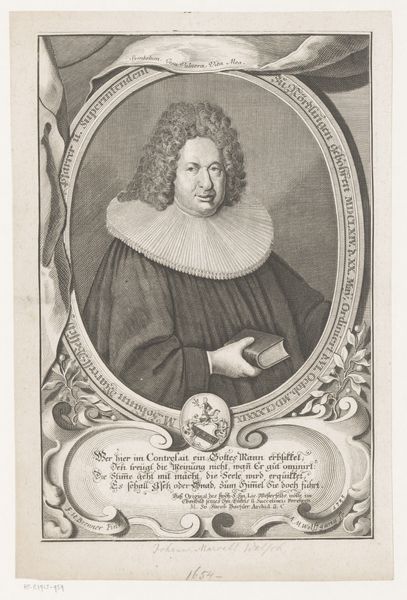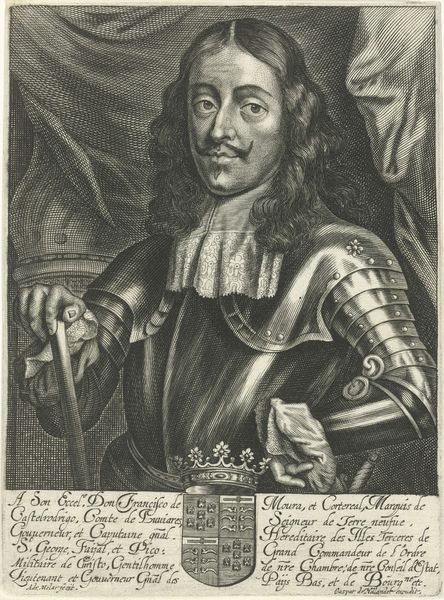
print, engraving
#
portrait
#
baroque
# print
#
old engraving style
#
history-painting
#
engraving
Dimensions: height 152 mm, width 105 mm
Copyright: Rijks Museum: Open Domain
Curator: Look at this print of Giovan Francesco Loredan, a Venetian writer, crafted by Giacomo Piccini in 1647. What strikes you most when you first see it? Editor: It’s all texture! The way the lines create that fur collar and the soft curls is quite masterful for an engraving. It almost feels tactile, as if you could reach out and touch the materiality of his wealth and status. Curator: Absolutely. Think about the socio-political implications here, too. Loredan, identified as a Venetian patrician in the inscription, held a specific position within the strict hierarchy of the Republic. Editor: How interesting to position an artwork within an oligarchical structure. Let's discuss that further: was it commissioned, purchased, traded? Considering how accessible prints were in comparison to paintings, could this be understood as a dissemination of power, crafting and controlling the Loredan image? Curator: That is a good point, as the circulation of prints enabled his image to be more widely distributed, therefore also increasing access to those outside his immediate social circle. From a material standpoint, think of the labor: the engraver carefully translating an image onto a copper plate, producing numerous identical images from one matrix. There is a certain production-line approach here. Editor: The labor process itself is fascinating. One can almost feel the precision of the engraver and the amount of care that was required to construct such a complex network of meaning through social access. He seems so self-contained yet so eager to be gazed upon! Curator: What is amazing to note is the use of Baroque conventions; it clearly places Loredan in a broader artistic context. You can feel the weight of artistic tradition in this portrait. Editor: Exactly. While a seemingly simple portrait, it allows us to investigate notions of access, identity, and power as well as material production of Venetian society through prints. It really is an amazing intersection of theory and practice. Curator: Indeed. Seeing how prints worked, as well as how Loredan wanted to be portrayed, it has given me a newfound perspective into the cultural identity of this portrait.
Comments
No comments
Be the first to comment and join the conversation on the ultimate creative platform.

